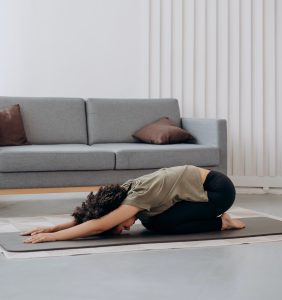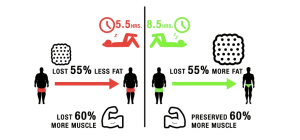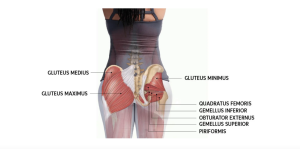Stretching. We all should be doing it – yet few of us do. The experts say most people tend to skip that part of their workout, but it makes a huge difference to how our bodies respond to exercise. Stretching is a fundamental component of physical fitness that involves lengthening and elongating the muscles to improve flexibility, increase range of motion, and prevent injury. Gentle stretching exercises can induce relaxation and reduce stress levels, which can indirectly benefit the back by reducing muscle tension often associated with stress. There are several key basics to keep in mind when it comes to stretching:
Common beliefs about stretching
1. The best time to stretch is after exercise when your muscles are warm.
Well, that is both true and false. It’s important to warm up your body before stretching to increase blood flow to the muscles and prepare them for the upcoming activity. Warm muscles are more relaxed and have a greater range of motion. However, walking briskly, jogging, or jumping jacks for 5-10 minutes are effective warm-up activities. Ideally, you’ll stretch a few minutes into and after your workout.
2. There’s only one right way to stretch.
False. There are many ways to stretch. Some common ones are mentioned below.
- Static stretching – stretch a specific muscle to its farthest point until you feel the tension and then hold the position for 15 to 30 seconds. This is considered the safest way to stretch as it’s done gently. This allows the muscles and connective tissue time to reset the stretch reflex. This helps improve flexibility. For example, bending over and touching your toes is a static stretch.
- PNF Stretching (Proprioceptive Neuromuscular Facilitation) – Involves a combination of stretching and contracting muscles. It’s usually done with a partner and is considered more advanced. It’s often used to improve flexibility and increase range of motion, and it’s particularly popular in rehabilitation settings for improving muscle function after injury. PNF stretching can be highly effective but should be done with caution, especially for beginners, and ideally under the guidance of a trained professional.
- Dynamic stretching – involves moving parts of your body gradually to increase the range of motion. Examples include arm circles or leg swings. Dynamic stretching is often used as part of a warm-up routine.
3. Stretching should be uncomfortable.
False. If stretching is painful then you’ve gone too far. Instead, move into a stretch and stop when you feel the tension, avoiding any jerky movements. Breathe deeply while you hold the stretch for 15 to 30 seconds. Exhale as you deepen the stretch to help relax the muscles. Then repeat the stretch, trying to move a little bit further into it during the second stretch. Never force your body into a stretch or stretch to the point of pain. Stretch to the point of mild discomfort, but not beyond. Remember, keep good posture throughout the stretch to ensure you’re targeting the right muscles and avoiding strain on other areas.
4. You should hold a stretch for at least 15 seconds.
True. Most experts agree that holding a stretch for 15 to 30 seconds is sufficient. Remember to focus on major muscle groups such as the calves, hamstrings, quadriceps, hip flexors, glutes, chest, shoulders, and back. Incorporate stretching into your regular exercise routine. Stretching should ideally be done daily, but at least 2-3 times per week to maintain flexibility. After exercising, perform static stretches during your cool-down to help relax and lengthen the muscles after they’ve been worked.
Pay attention to how your body feels during stretching. If you experience sharp pain, ease off the stretch immediately. Stretching should feel challenging but never painful. Remember that consistency is key when it comes to stretching. Incorporating stretching into your routine can lead to improved flexibility, better performance in physical activities, and reduced risk of injury. If you’re new to stretching or have any concerns, consider consulting a fitness professional or physical therapist for guidance.
Benefits of Stretching
 Performing regular stretches will loosen muscles, increase your range of motion, and help prevent muscular imbalances by ensuring that all muscles around the spine and back are equally flexible and strong. These effects can lower the risk of injuries such as sprains, which affect ligaments, or strains, which affect muscles or tendons. It offers a multitude of benefits for both the body and mind and can also reduce pain from chronic conditions, such as osteoarthritis and lower back pain.
Performing regular stretches will loosen muscles, increase your range of motion, and help prevent muscular imbalances by ensuring that all muscles around the spine and back are equally flexible and strong. These effects can lower the risk of injuries such as sprains, which affect ligaments, or strains, which affect muscles or tendons. It offers a multitude of benefits for both the body and mind and can also reduce pain from chronic conditions, such as osteoarthritis and lower back pain.
Should any stretching cause discomfort, it is important to stop immediately. Stretching should be done within the range of your ability and even the gentlest of stretches can have benefits.
Chiro & Sports Med
Our chiropractors at Chiro & Sports Med are committed to providing chiropractic solutions to address your unique needs, whether you are experiencing an irritated nerve, bulging disc, back pain, neck pain, knee pain, headaches, or even muscular tightness and tension. You may be also searching for pain relief after an accident or experiencing an injury. Our mission is to help reduce or eliminate pain and to prevent future problems and injuries. Above all, we are here to improve your quality of life, well-being, and ability to live an active healthy lifestyle.
If you would like to make an appointment with one of the chiropractors at Chiro & Sports Med simply call our office on 9817 2005 and one of our friendly staff will organise an appointment for you or you can Book Online.





